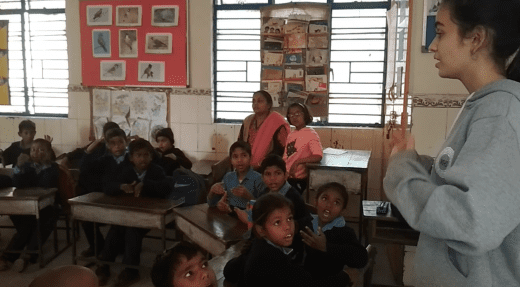Article
At government schools in India–which, as Joya explains, largely cater to underprivileged students and have limited financial resources–the arts often take a backseat to more practical subjects. “Music education, in particular, is significantly lacking in government schools,” Joya notes.
Therefore, Joya’s project aimed to introduce music to young, underprivileged students at a government school in her New Delhi neighborhood. While her project had a narrow focus on a single institution, it provided valuable insights into how music education could be effectively implemented on a larger scale for students attending government schools.
Inspiration behind the project
Joya, an avid musician and staunch supporter of the arts, has long been acutely aware of the lacuna in the Indian government education system when it comes to prioritizing the arts. “However, it was the chance to develop an Action Project for Humanity in Action that provided me with the motivation to transform my ideas into a concrete initiative,” Joya shares. She chose to volunteer at this particular school because it is located in her neighborhood in New Delhi.
“Humanity in Action provided me with the motivation to transform my ideas into a concrete initiative.”
Project Development and Execution
First of all, Joya had several meetings with the school’s administrators to get a better sense of the students’ diverse backgrounds and skills. Then, before each lesson, she meticulously devised a lesson plan which included the songs, rhythmic patterns, and musical games she wanted to teach the students.
Having never worked with small children before, she found that she needed to adapt her lessons as she went. Due to the students’ limited exposure to music education, they often had trouble retaining the skills she taught them, so she had to progress a lot more slowly than she had initially anticipated.

In terms of finances, Joya’s project did not require any additional resources. “I either brought the necessary materials and teaching tools from home or utilized the supplies provided by the school,” Joya adds, noting that she did require some teaching assistance at the school due to the challenge of managing a classroom of 40 seven-year-olds on her own.
As of July 2023, the project is concluded and does not continue.
Updated July 2023



